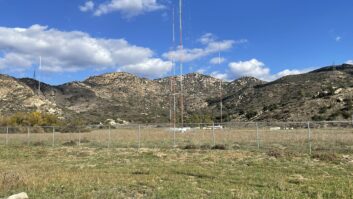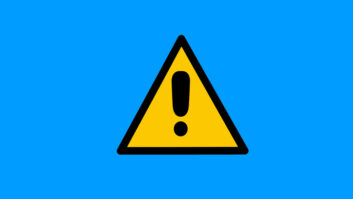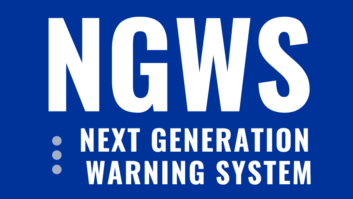Applying for a set of broadcast call letters comes with several different considerations. Typically, the process involves checking if another radio or TV station is using the desired call sign. But did you know that could also mean ruling out a marine vessel?
John Broomall, veteran broadcast consultant who operates Christian Community Broadcasters, recently encountered this situation while assisting Faith Baptist Church of Defiance, Ohio. The church sought the call sign WOWR, meaning “Without Walls Radio,” for their LPFM that was granted a CP during the 2023 filing window. But WOWR was licensed to the merchant vessel Minx.
Broomall has encountered this scenario before when filing for LPFM call signs and contacted the U.S. Coast Guard, which he says acts in a research capacity in determining situations where a vessel is still active. In cases where a vessel no longer is active, the Coast Guard does not object to having the call sign reassigned. That was the case with WOWR, and so the FCC was notified, making the calls available to Faith Baptist.
The practice of assigning merchant vessels call letters dates back to 1912, when the U.S. government began licensing radio stations. According to Thomas H. White’s United States Early Radio History, ship stations were assigned three and four-letter call signs with the prefix “W” in the Pacific Ocean and “K” in the Atlantic Ocean, the reverse of how they were soon to be assigned to broadcast stations, with the Mississippi River becoming the dividing boundary in 1923.
This practice actually remains in place today. Like broadcast stations, three-letter call signs are no longer assigned to vessels, but, according to the FCC rulebook, “ships with transmitter-equipped survival craft shall be assigned four-letter call signs.” This allows a license for a ship to operate a marine-band VHF radio, radar or an emergency position-indicating radiobeacon.
If you conduct a call sign search through the FCC LMS database, for a call sign like WNJL, for example, it comes back to a petroleum tanker known as Point Vail. That means, without contacting the Coast Guard first, the calls are not available for an AM, FM or TV broadcaster.
The call sign bank NAA through NZZ, meanwhile, is assigned to the U.S. Navy. Pleasure crafts are not required to have an FCC license to operate a marine-band radio.
The resourceful Broomall, with more than 1,000 successful station filings on his ledger, uses his experience to deliver the desired call signs for his LPFM clients, including scenarios when another full-power FM has the same call sign. In those situations, according to the FCC rulebook, an applicant is required to certify that consent to use the secondary call sign has been obtained from the holder of the primary call sign. This allowed 104.3 WFOX(LP) Sandy Springs, S.C., for example, to coexist with 95.9 WFOX(FM) Southport, Ct. Sometimes this co-use can involve compensation exchanged between the license holders.
“I tell my new permittees that they need to name their baby,” Broomall quipped.
He encourages LPFM applicants to use the full capabilities of the LMS search, including wildcard searches.












